Voltage Converters Guide
Traveling abroad means you need to plug your electronic devices into foreign electricity networks. Apart from the challenges of socket difference, which can be solved with a universal adapter, there can also be voltage differences. The most common values are 110V (US, Canada, and some others) and 220V (Europe, the UK, and most of the other world countries). Although the indication is 110 and 220, the actual values vary between 110 to 120 and 220 to 240 Volt.
To be able to use electronic equipment suited for one network on a network with a different voltage, a voltage converter is needed.
What is a voltage converter?
A voltage converter is, like the word ways, a converter that takes one voltage as input and outputs another voltage. The input voltage can be higher than the output voltage or the other way around. Both options are possible, and there are also voltage converters that do both.
Plugging a lower voltage device into a higher voltage socket has a high risk of damaging the device. Some devices have protection against this, but most will not since it will require extra electrical components. Plugging a high-voltage device into a socket with a lower voltage will generally not harm the device, it will simply not function.
In this article we will be talking about voltage converters for the public power grid across the world. Think of travel and usage of devices from other parts of the world.
Types of voltage converters
When talking about voltage converters, they are referred to as step-up and step-down converters. Which one you need depends on the situation.
Step-up converters
A step-up converter is a device that increases the voltage. This type of voltage converter is required to use 220V equipment in a 110V socket. For Europeans and Britons traveling to the US or Canada, this type of converter is needed. Well, assuming you want to use your own electronic devices overseas!
Step-down converters
A step-down converter is a device that does the opposite, it decreases the voltage from a higher value to a lower value. A step-down voltage converter enables lower voltage devices to be used in a higher voltage socket (e.g. a 110V device into a 220V socket). US and Canadian travelers will require such a device when traveling to Europe or the UK.
Combi converters
A combi converter is a device that can act both as a step-up and a step-down voltage converter. This type of device can be configured as either a step-up or step-down voltage converter. This type of device can be useful if you travel to different parts of the world with different residential voltage values. Electronic devices bought from outside your home country with different voltage requirements can also be used with a combi converter.
How to select a voltage converter
The first thing you will look for in a voltage converter is its intended use. Deciding on a step-up, step-down, or combi convertor will be determined by where it will be used and what type of devices it will be used with.
But there are more aspects to consider when selecting a voltage converter.
One of the most important things to consider in selecting a voltage converter is the power it can handle (or Wattage). The power specification will determine how many devices you can plug into the converter. Do you need to plug in only one device, or multiple devices? Do you want to plug in your mobile charger, or also a hairdryer? If more devices or more high-power devices need to be plugged in, a higher-wattage voltage converter is needed.
The second thing to consider is the size. The dimensions of a voltage converter will vary depending on the number of sockets it has and how much power it can output. For permanent use in one location, this will be less important. But if you need to travel with the voltage converter, the size and weight of the device are important.
The characteristics of a voltage converter. How long is the cable to plug it into a socket? How many sockets does it have? Does it have any USB ports? But also, does it have any protection against incorrect usage (fuses, surge protection)? And any extra options, like fast charging, can be a benefit.
Last but not least, the price. Prices vary and should be considered of course, but it is best to select something safe and reliable, even if it is not the cheapest option!
Voltage Converters Selection Guide
Considering the many options available in voltage converters, choosing the right one can be difficult. To help you we have created a list with top picks for specific usage purposes. When you know the intended usage, the list below can help you pick the right device.
High-Power Voltage Converter
In this category, we distinguish between two scenarios, permanent use in a fixed location, and use for travel. If you bring your existing devices abroad and don’t want to buy any new electronic devices, it is best to use a high-power voltage converter that can handle the wattage required for your devices. Since the converter will not need to be moved, extra weight or large dimensions are less problematic. For traveling with a device that can handle higher wattage, the dimensions and weight do matter of course.
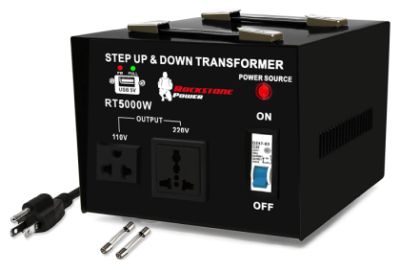
The Rockstone Power voltage converters are heavy-duty converters for home use. They come in variants for power ranges from 5000 Watts to 1000 Watts and can be configured as a step-up or step-down voltage converter. With this level of power, you can easily plug in most home appliances.
The voltage ranges supported are 220V-240V to 110V-120V in both directions. They all have a circuit breaker to protect against voltage fluctuations (especially useful for non-grounded sockets). But they also have a circuit breaker that protects against too high a current. And lastly, these voltage converters all have a 5V USB port for easy charging of portable devices.
Highly rated and used by the US military and Tesla, the Rockstone Power voltage converter is a good choice for high power requirements. Simply select the input power on the back and plug the electronic equipment in the right socket in the front.
High-Power Voltage Converters for Travel
When traveling, things should be small, light, and convenient. This also applies to any voltage converter you may want to bring abroad. There are many solutions for low-power voltage converters.
But if you want to use a hair dryer or curling iron, low-power voltage converters will not suffice. For these devices, you will need something of around 2000 Watts. The challenge with a higher power is that conversion can generate more heat, so some devices use a fan to cool the voltage converter. Not ideal in a hotel room where you need to sleep.
Two great options are the DoAce C11 2000W travel voltage converter and the Bonazza 2000W voltage converter.
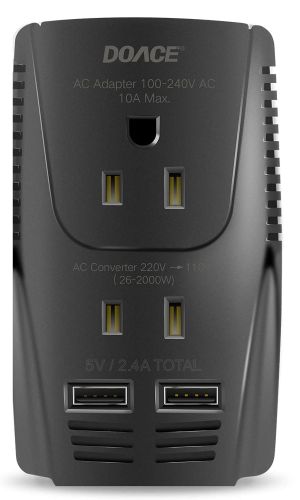
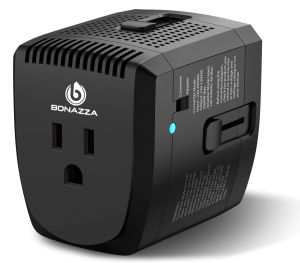
Both have an adapter mode in which the device functions as a power plug adapter. In this mode, there is no voltage conversion, and the voltage input range is 100 – 240V. Output power is limited in the adapter mode, so it should be used only for charging portable devices and low-power devices. In this mode, the devices can be used in most parts of the world because of the wall sockets that are supported (type A, type C, type G, and type I).
Both devices are light-weight (5 to 7 ounces), and small, they fit in the palm of a hand.
In converter mode, the device acts as a step-down voltage converter, taking 220-240V as input and generating 110-120V as output. In this mode, you can connect your hair dryer, curling iron, and other high-power devices.
The DoAce C11 has a slight advantage over the Bonazza in the fact that it has two USB ports. This allows for direct charging of USB (5V) devices. Combined with the regular socket, you can charge 3 devices simultaneously. The Bonazza only supports a single output, so you will need to plug in your mobile phone (or other) charger.
Muli-port Travel Voltage Converters
If you are traveling from the US or Canada to other places in the world and need a solution with a lot of outputs, the Bestek International Travel adapter is a good option. With 3 AC outlets and 4 USB ports, this step-down converter can charge up to 7 devices at the same time.
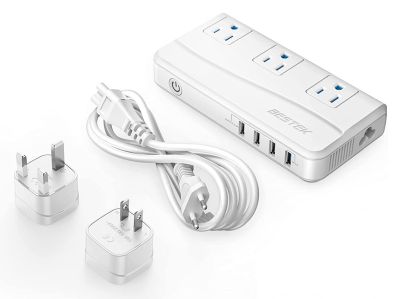
The USB and AC outputs are separated, and the device has over-load, over-heat, and short-circuit protection. So, it is safe to use in any situation. Output power is limited, 200W for the AC outlets and 18W for the USB ports (one of them being a quick charge QC3.0 port). But for charging low-power portable devices, this is ideal. To achieve this, the device does have an internal fan for cooling. For light sleepers, the noise could pose a problem.
International Voltage Converters
For people traveling across the world, you would want a solution that can act as both a step-up and step-down voltage converter. This way, any input voltage can be used for any device.
Although there are plenty of combi converters available offering both the step-up and step-down conversion, there are not many that are portable and still have a decent output power. Many are either too bulky, or they are a maximum of 100W.
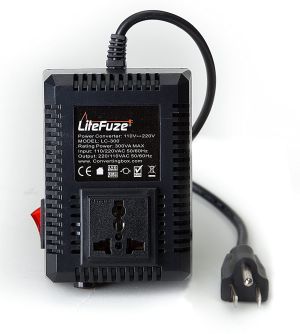
The best portable solution is the LiteFuze LC-300 travel voltage converter, which is a step-up and step-down converter. It is also available in a 500Watt version, but the 300Watt will already be sufficient for most travel purposes. At only 3 pounds, it is still not too heavy to add to your luggage.
A few notes on this device:
- Make sure to get the unit with the right cable (US, EU, UK) as variants are available.
- Extra fuses can help solve problems. If connected equipment causes a spike when turned on, the fuse can blow.
- For continued use of the 300Watt version, a maximum of 150W is recommended. If you need more, get the 500Watt version.
What is the difference between an adapter and a converter?
An adapter only enables the use of a different plug in a different socket, there is no voltage conversion. A converter takes a different input voltage compared to the output voltage. The voltage can be higher (step-up), or lower (step-down). A voltage converter can often be used in adapter mode, but adapters cannot be used as voltage converters.
Do I need a voltage converter for a dual-voltage device?
Dual voltage devices are devices that have a wide voltage range (100-220V, or 100-240V). This applies mostly to low-power devices, such as mobile device chargers and alike. For these devices, no converter is required. Depending on the plug and socket, an adapter may be required.
What are plug types for power networks?
Different countries use different power sockets, which require a matching plug on an electronic device (or power cable). The most common types of plug types are:
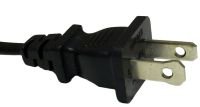
Type A – US/Canada/Japan
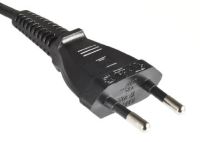
Type C – Most of Europe
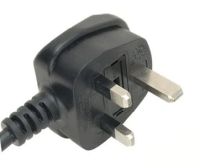
Type G – UK/Hong Kong/Malaysia/Singapore
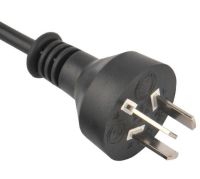
Type I – Australia/New Zealand/China
Is a voltage converter the same as a transformer?

A voltage converter and a transformer are not the same. The main difference between the two is how they convert the AC power to the output value. A converter cust the sinus wave of the power signal, while a transformer changes the length of the sinus wave. Although this may be a bit technical, it is important to realize that some devices require a “proper” sinus wave to function and will work with a transformer but not with a converter. The reason that converters are still used a lot is the size of a transformer.
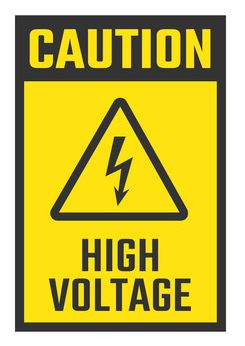


Thank you. It works.
@Fritz Liessling - Thank you for your feedback. I understand that you are looking for other resolutions, but within Windows…
Although the answer to this question is correct, it is really a cop-out answer. It's easy enough to find answers…
To the pcauthorities.com administrator, You always provide useful links and resources.
???? ?? ??? The Last of us